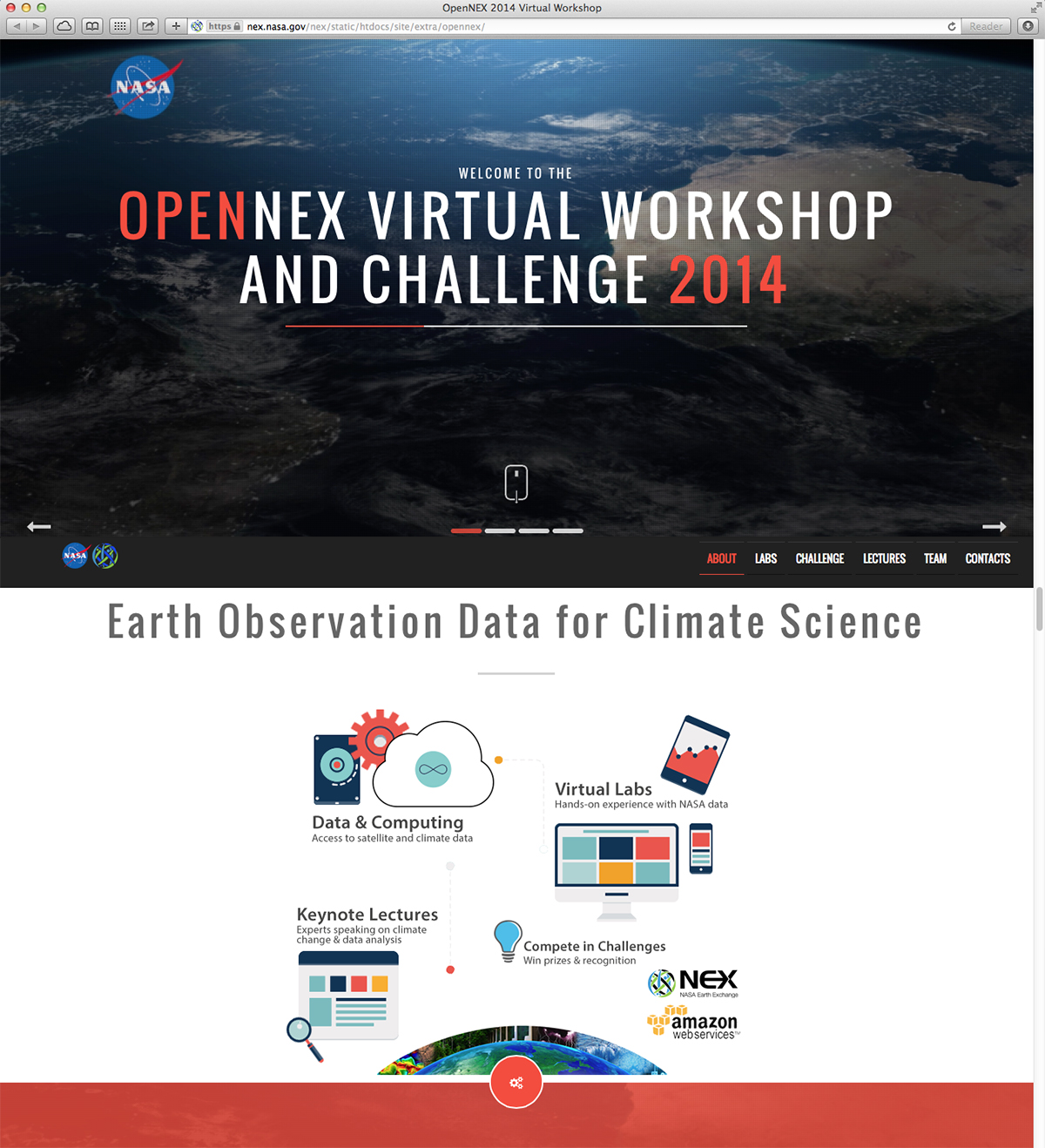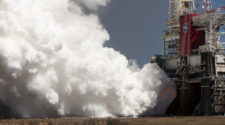NASA is launching two challenges to give the public an opportunity to create innovative ways to use data from the agency’s Earth science satellites.
The challenges will use the Open NASA Earth Exchange. OpenNEX is a data, supercomputing and knowledge platform where users can share modeling and analysis codes, scientific results, knowledge and expertise to solve big data challenges in the Earth sciences. A component of the NASA Earth Exchange, OpenNEX provides users a large collection of climate and Earth science satellite data sets, including global land surface images, vegetation conditions, climate observations and climate projections.
“OpenNEX provides the general public with easy access to an integrated Earth science computational and data platform,” said Rama Nemani, principal scientist for the NEX project at NASA’s Ames Research Center in Moffett Field, California. “These challenges allow citizen scientists to realize the value of NASA data assets and offers NASA new ideas on how to share and use that data.”
The first “ideation” stage of the challenge, which runs July 1 through Aug. 1, offers as much as $10,000 in awards for ideas on novel uses of the datasets. The second “builder” stage, beginning in August, will offer between $30,000 and $50,000 in awards for the development of an application or algorithm that promotes climate resilience using the OpenNEX data, based on ideas from the first stage of the challenge. NASA will announce the overall challenge winners in December.
NASA’s OpenNEX challenge addresses a number of White House initiatives, including Open Data, Big Data and Climate Data. These initiatives advance national goals to address climate change impacts on economic growth, health and livelihood, and include the use of competitions and challenges to foster regional innovation.
“NASA is an innovation leader in developing high-quality data covering all parts of our planet that can be used to make a difference in people’s lives,” said Tsengdar Lee, program manager in the Earth Science Division of the Science Mission Directorate at NASA Headquarters in Washington. “NASA is committed to sharing that knowledge freely with the global community.”
The challenges are managed by NASA’s Center of Excellence for Collaborative Innovation (CoECI). CoECI was established in coordination with the Office of Science and Technology Policy to advance NASA’s open innovation efforts and extend that expertise to other federal agencies. The challenges are released on the NASA Innovation Pavilion, one of the CoECI platforms available to NASA team members, through its contract with InnoCentive, Inc.
To educate citizen scientists on how the data on OpenNEX can be used, NASA is releasing a series of online video lectures and hands-on lab modules. To view this material, and for information on registering for the challenges, visit: https://nex.nasa.gov/OpenNEX.
OpenNEX is hosted on the Amazon Web Services (AWS) cloud and available to the public through a Space Act Agreement.
NASA monitors Earth’s vital signs from land, air and space with a fleet of satellites and ambitious airborne and ground-based observation campaigns. NASA develops new ways to observe and study Earth’s interconnected natural systems with long-term data records and computer analysis tools to better see how our planet is changing. The agency shares this unique knowledge with the global community and works with institutions in the United States and around the world that contribute to understanding and protecting our home planet.
For more information about NASA’s Earth science activities in 2014, visit: http://www.nasa.gov/earthrightnow.
For information on the latest NASA Earth science findings, visit: http://www.nasa.gov/earth.




